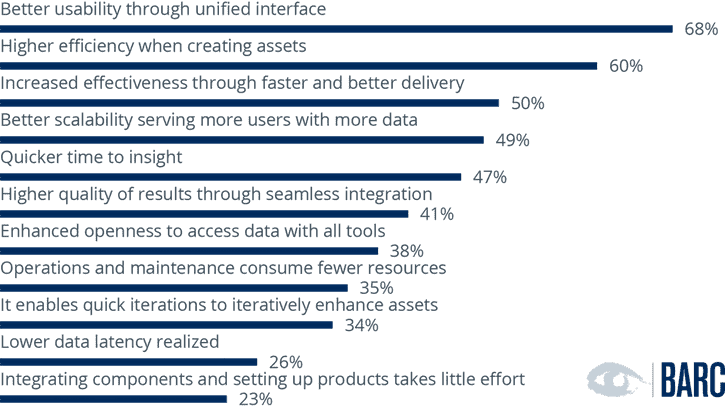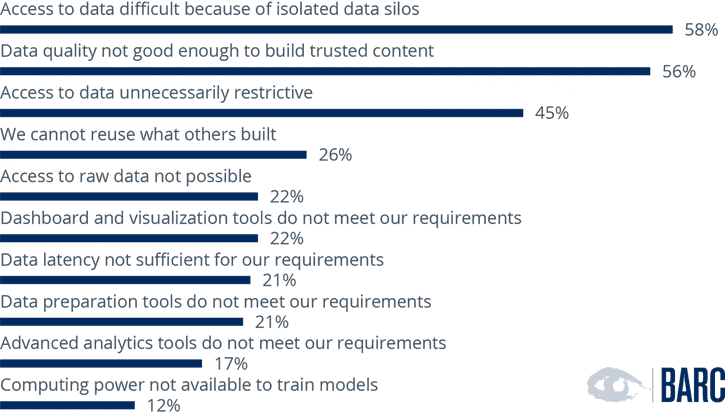Analytics Leaders Are Building on Vertical Integration
BARC releases the results of its new topical survey “Analytics Unchained: Unleash the Power of Analytics With Integrated Software”.
BARC releases the results of its new topical survey “Analytics Unchained: Unleash the Power of Analytics With Integrated Software”. The global survey examines the requirements of tightly integrated modern data and analytics software as well as obstacles for re-using data, models and visualizations and the benefits achieved when using integrated data and analytics software. The study is available for download free of charge thanks to sponsorship by Board, ONE LOGIC, Pyramid, Suadeo and Tableau.
Key findings:
- Enhanced analytics agility: Vertical trumps horizontal integration
- Data democratization needs free flow of data and transparency around data usage
- Better usability and tight integration propel effectiveness, speed and efficiency
Integrated data and analytics software makes its way into the heart of corporate analytics
Many companies struggle to convert their data into insights that help them support decision-making and drive innovation. Therefore, enhancing the required capabilities for the data and analytics process is high on the agenda for many organizations. Companies see huge potential in vertically integrated tools which provide end-to-end functionality in a unified environment for a variety of use cases.
According to the new BARC survey, 43 percent of the companies questioned are already relying on vertically integrated end-to-end software to support their decision-making. Among the companies that claim to be better than their competitors at leveraging data for decision support and decision automation (leaders), this share is even higher with 73 percent already using vertically integrated software. While laggards have not fully bought into the benefits of the concept yet, leaders have already acted and are reaping substantial rewards.
“Companies realize various benefits when deploying integrated data and analytics software. The clear number one benefit for companies is better usability,” summarizes Robert Tischler, Senior Analyst at BARC and co-author of this study. “This is achieved through unified interfaces and augmented analytics features that guide users when analyzing data or creating analytics assets. This is of course only a means to an end: It is an enabler to engage more business users to provide more relevant results in less time to inform and automate decisions.”

Transparency creates confidence in results and crushes the barriers to free access
The analytics process is yet to be perfected in most companies and it can be expected that there will always be room for improvement as expectations rise constantly. The study shows that a major threat to the free flow of data and ideas are data silos, which are more often created by restrictive access policies than by incompatible software. In all cases, the problem begins with data silos, whether it is the drawing of data or the organizational barriers that result in restrictive and exclusive access.

Transparency is of vital interest when removing these barriers. “Having comprehensive metadata provides a view on data lineage that shows where data is used and where it comes from. Knowing where it is used and who uses it makes it easier to agree to share it with others for the benefit of the organization. Transparency is vital to democratizing access to data in a company,” said Nina Lorenz, BARC Analyst and co-author of the study.
About The Survey
“Analytics Unchained: Unleash the Power of Analytics With Integrated Software” is a BARC market research study that examines the use of integrated data and analytics software and analyzes the drivers for adoption and the benefits achieved. It is based on a worldwide survey of 319 companies of various sizes and industries. The authors of the study are BARC Analysts Nina Lorenz and Robert Tischler.
Click here for more information and to download the full study.
Visit the infographic here.
